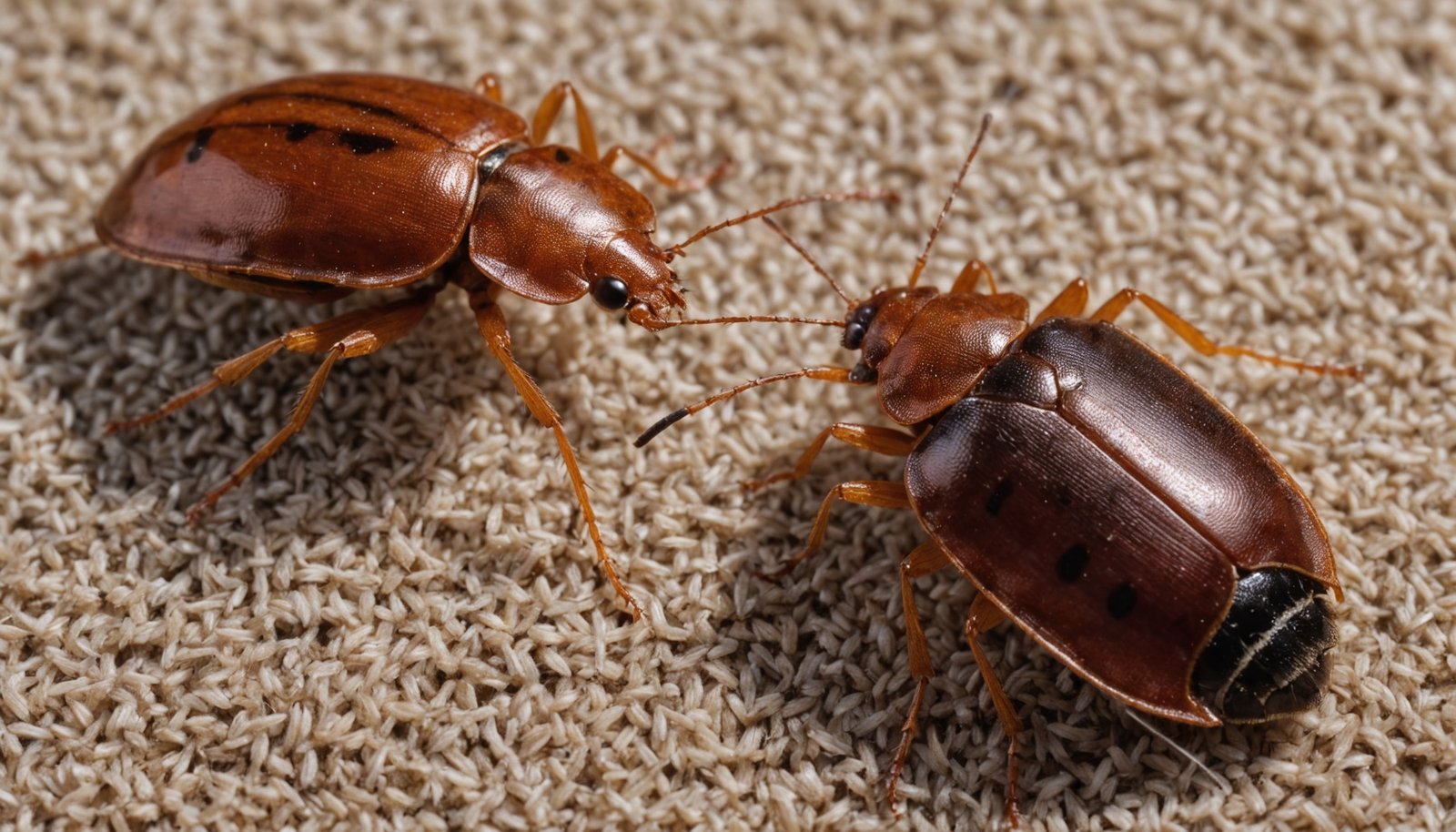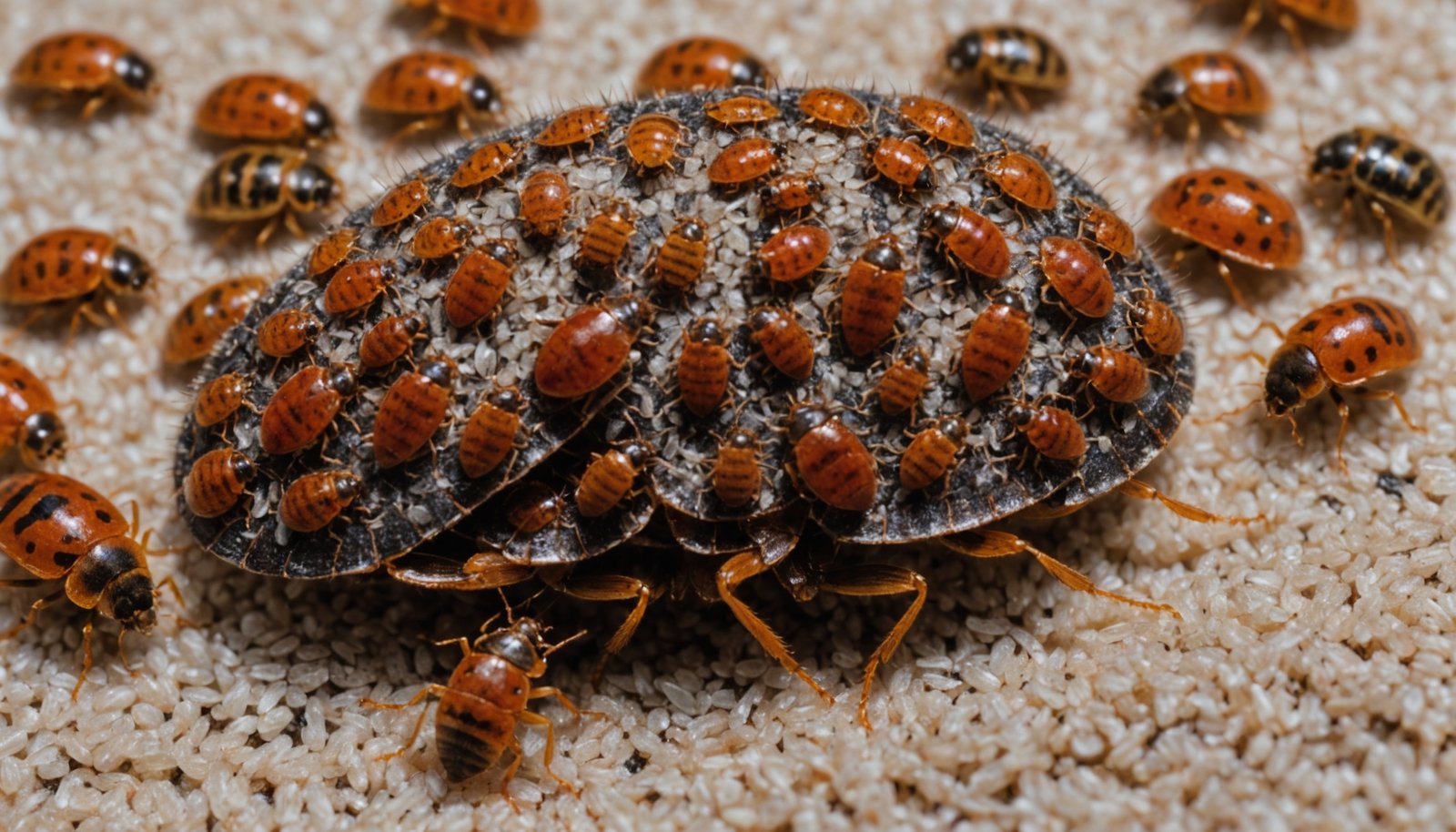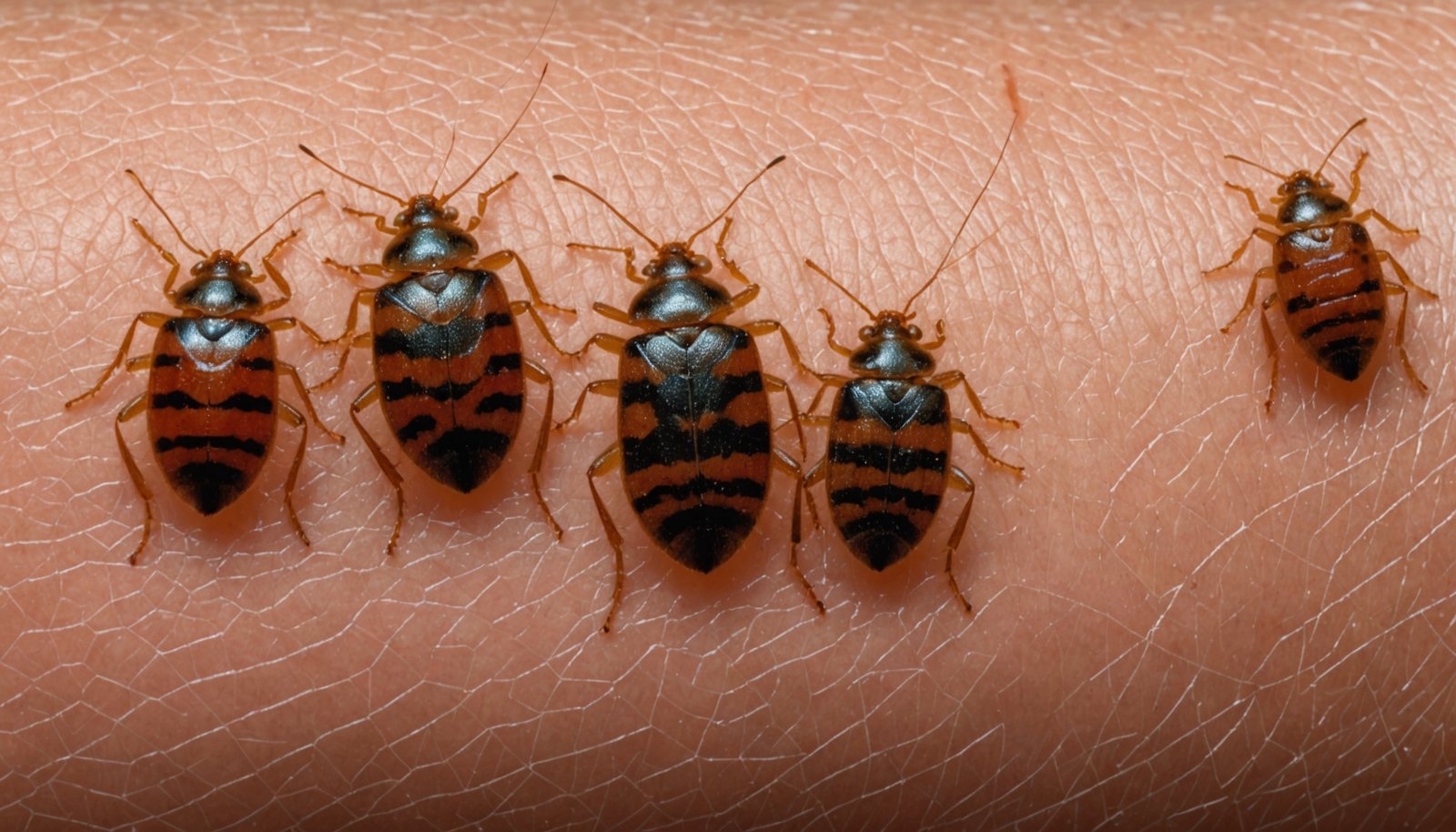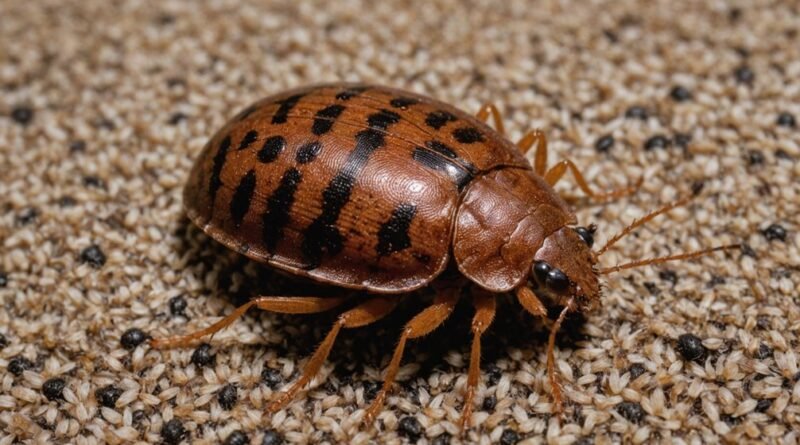Bed Bugs vs. Fleas vs. Carpet Beetles: How to Tell the Difference
Spot bed bugs as flat, oval, reddish-brown bugs in mattress seams; fleas are dark, shiny jumpers near pets and carpets; carpet beetles are tiny, dome-shaped, mottled and their fuzzy larvae shed skins. Bed bug bites form lines on exposed skin; flea bites cluster on ankles and itch fast; carpet beetles don’t bite but cause rash. Look for rust specks (bed bugs), flea dirt, or fabric damage and sheds. Simple tests and targeted steps can confirm and fix it fast.
Key Takeaways
- Appearance: Bed bugs are flat, oval, reddish-brown; fleas are shiny, laterally flattened jumpers; carpet beetles are tiny, dome-shaped, mottled hard-shelled insects.
- Movement: Bed bugs crawl and hide in tight seams; fleas jump explosively; carpet beetles and larvae crawl slowly in closets and upholstery.
- Bites/skin: Bed bugs leave linear clusters; fleas cause itchy ankle welts with red halos; carpet beetle larvae cause rash-like dermatitis, not bites.
- Evidence: Bed bugs leave rusty smears, black specks, shed skins; fleas leave flea dirt and jumping adults; carpet beetles leave shed larval skins and fabric holes.
- Where to check: Mattress seams and bed frames for bed bugs; pet bedding and carpets for fleas; wool rugs, closets, and vents for carpet beetles.
Quick ID Guide: What Each Pest Looks Like

Spot the differences fast.
Check bodies first: bed bugs look like flat, oval apple seeds—reddish-brown, wingless, with a segmented abdomen and tiny antennae. Their heads are short, eyes small, and you’ll see horizontal ridges on the thorax shield.
Fleas are much smaller, dark brown, shiny, and laterally flattened like a thin coin on edge; they’ve long rear legs and short bristles, plus tiny combs near the head.
Carpet beetles are tiny, dome-shaped, and hard-shelled. Adults show mottled patterns—black, white, tan, or orange—and short clubbed antennae.
Inspect immature stages too.
Bed bug nymphs are pale, translucent, and elongate-oval.
Flea larvae are slender, white, legless, and bristly.
Carpet beetle larvae are fuzzy or carrot-shaped with tufted hairs. You’ll often find shed skins and specks near them.
Where They Hide and How They Move

Three pests, three playbooks.
Bed bugs stake out sleeping zones. You’ll find them in mattress seams, box springs, headboards, bed frames, and nearby cracks, plus behind baseboards and outlet plates. They move deliberately, crawling flat through tight gaps and hitchhiking in luggage and furniture.
Fleas hide where hosts rest. Check pet bedding, carpets, sofa crevices, and floorboard edges. They favor shaded, humid spots. Their movement is explosive: they jump vertically and horizontally multiple inches, letting them leap onto you or pets and vanish fast.
Carpet beetles lurk in quieter storage zones. Inspect closets, wool rugs, upholstered furniture, air vents, and baseboards. Adults fly toward windows and lights; larvae crawl slowly, grazing along fibers and seams.
You’ll often spot shed skins or frass near infested materials.
Bite Patterns, Allergic Reactions, and Skin Signs

Skin clues separate these pests fast. Bed bugs usually leave straight or zigzag lines of 3–5 bites on exposed skin, often after sleep.
Fleas favor ankles and lower legs, creating scattered, intensely itchy welts with a red halo.
Carpet beetles don’t bite; their bristly larvae cause patchy, itchy rashes or hives where fibers brushed your skin.
Watch timing: bed bug reactions often swell hours later, fleas itch immediately, and carpet beetle dermatitis flares after contact with infested fabrics.
- Tiny red dots marching in a row along your forearm at dawn
- Peppery, jumpy bites clustering around socks after a pet nap
- Irregular, hive-like patches where a wool throw touched your neck
If swelling spreads, you wheeze, or blister, seek medical care promptly.
Evidence to Look For: Stains, Droppings, Sheds, and Damage
Proof hides in plain sight. Check fabrics first. Bed bugs leave rusty smears and black ink-like specks (dried blood and fecal spots) along mattress seams, box springs, and headboards.
You’ll also find translucent, rice-like shed skins and tiny white eggs glued in crevices. Fleas rarely stain sheets; instead, look for “flea dirt” (pepper-like specks) on pet bedding that turns reddish-brown when wet. You might spot small jumping adults around baseboards or where pets rest.
Inspect carpets and closets for carpet beetle evidence. Their bristly, brown, shed larval skins collect under furniture, along baseboards, and in air vents.
Look for irregular holes or grazed patches in wool, silk, feather-filled items, and natural-fiber rugs. Tiny gritty droppings near damaged textiles confirm feeding, not blood.
Fast Ways to Confirm and Next Steps for Treatment
Before you buy sprays or toss bedding, confirm the culprit quickly. Do a 10-minute check: inspect seams, baseboards, and pet areas with a bright flashlight.
Place clear tape near bed legs and pet beds overnight to snag movers. Do a white-sock test over carpet—shuffle and watch for jumping specks.
- Tiny rust dots on sheets, flat oval bugs near seams: you’ve got bed bugs.
- Jumping dark specks on socks or pets, pepper-like dirt that reddens with water: fleas.
- Fuzzy, oval larvae and shed skins near baseboards or closets, fabric holes: carpet beetles.
Next steps: For bed bugs, isolate the bed, encase mattress, launder hot, and call a pro.
For fleas, treat pets, vacuum daily, and use IGRs.
For carpet beetles, deep-clean, seal fabrics, and deploy targeted traps.
Conclusion
You’ve got this. Now you can spot key differences fast—bed bugs’ flat, reddish bodies and blood stains; fleas’ tiny, jumping specks and itchy ankle bites; carpet beetles’ fuzzy larvae and fabric damage. Check where they hide, note how they move, and scan for bites, sheds, and stains. Use sticky traps, flashlight inspections, and lint rollers to confirm. If it’s bed bugs or fleas, act quickly with laundering, vacuuming, and targeted treatments, and don’t hesitate to call a professional.

